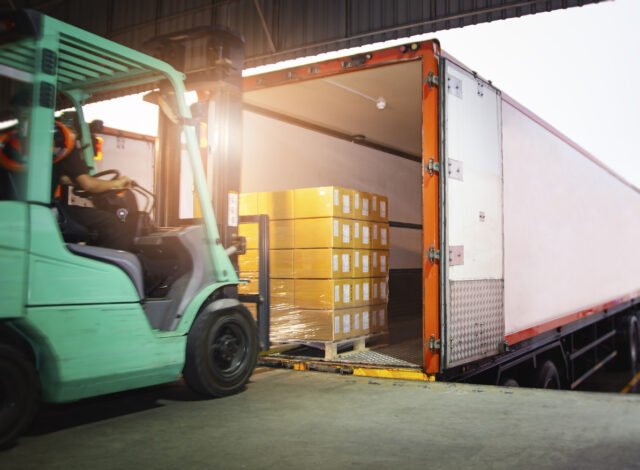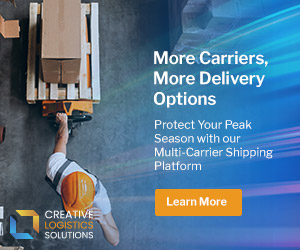What Is LTL Logistics in Freight Shipping?

It’s a common sight on U.S. highways: long-haul trucks moving freight shipments from one location to another. While the average person just wants to pass the slower-moving trucks to keep their road trip on schedule, businesses have more pressing concerns when it comes to freight shipping.
As a shipper, you need to coordinate deliveries perfectly so they make it to your customers intact and on time. A big part of understanding freight shipping is knowing whether to use LTL or FTL. But what do the terms mean, and what’s the difference? Let’s dive in.
What Is LTL Logistics in Freight Shipping?
Less than truckload (LTL) shipping is a transportation method where multiple shipments from different businesses are consolidated into a single truck for delivery. Because these smaller shipments share the available space, each business saves money on transportation costs.
LTL shipping is usually used for palletized or crated shipments between 150 and 15,000 pounds, especially if the goods are large, dense, bulky, or oddly shaped. As a result, it often requires special equipment such as pallet jacks, liftgates, and forklifts.
If you’re looking for the most cost-effective way to ship freight, LTL is probably the method for you! Since you don’t have to pay for an entire truck—including any unused space—you save money on shipping costs. Of course, the total cost depends on a variety of factors, including distance, special handling requirements, and value-adding services like residential delivery.
One of the most important factors in determining the cost of LTL shipping is freight class. Developed by the National Motor Freight Traffic Association (NMFTA), freight class is a measure of how difficult something is to ship. It’s assigned based on four factors:
- Density: How much space cargo takes up compared to its weight. Density is calculated by dividing a shipment’s size in cubic feet by its weight in pounds.
- Handling: How easily freight can be handled. Bulky, hazardous, or fragile items are often harder to handle.
- Stowability: How easy it is to store cargo. Uniformly-shaped goods, such as items packed into boxes, are easier to stow in trucks.
- Liability: How dangerous or difficult the shipment is to transport. For example, hazardous materials and temperature-controlled shipments are greater liabilities.
LTL vs FTL Shipping
The main difference between LTL and FTL shipping is shipment weight and trailer space. While LTL is designed for smaller shipments that don’t occupy an entire truck, FTL (full truckload) shipping is the go-to choice when a shipper has enough goods to fill an entire truck—generally over 15,000 pounds. Because FTL shipping gives one business exclusive use of a truck for their cargo, the transportation requires fewer stops and handling points.
LTL vs. Parcel Shipping
Parcel shipments are under 150 pounds and don’t require special equipment to load, unload, or carry. Because they can easily be handled by carriers, parcel shipping is often used for direct-to-consumer (DTC) ecommerce, where customers place orders online and have packages shipped directly to them. While LTL can be used to deliver bulky products, like products, to a customer’s home, it comes with extra challenges and costs.
For a more detailed breakdown of the differences between LTL and parcel shipping, check out this article.
Benefits of LTL Logistics
LTL logistics saves money, keeps products safe from damage, and even helps the environment.
- Cost savings. Because LTL logistics uses shared truck space, it reduces costs for every business involved. If you don’t have enough goods to fill an entire truck, LTL is a no-brainer.
- Increased shipment security. Because LTL shipments are often crated or palletized, individual items aren’t handled much. This protects them from being damaged.
- Greater sustainability. Sending half-empty trucks back and forth across the country isn’t just inefficient—it also adds unnecessary carbon emissions to the environment. LTL freight helps minimize this problem by ensuring vehicles are filled to capacity, so fewer trucks are needed to ship the same amount of goods.
- Visibility. Just like parcel shipping, LTL shipping allows you to track shipments. Shippers and recipients can use the assigned tracking number to monitor the status of the shipment online, including the current location, expected delivery date, and any potential delays.
- Flexibility. LTL shipping is great when you have customers who place smaller orders. Instead of waiting until you have enough orders to fill an entire truck, you can ship their products immediately using LTL.
LTL logistics does have a significant downside: because trucks make so many different stops, transit times are slower than FTL shipments. However, if a super-quick delivery time isn’t your primary concern, LTL shipping should work well for you.
How Does LTL Logistics Work?
LTL freight combines partial loads from different shippers, resulting in full trucks that make multiple stops. It uses a system of terminals where goods are consolidated and transferred from truck to truck. The LTL shipping process can be broken down into four main stages: freight pickup, freight consolidation, transit, and final delivery.
- Freight pickup. First, a shipper schedules a freight pickup with their LTL carrier, which dispatches a truck to collect the shipment. The carrier brings the shipments of multiple businesses to local terminals.
- Freight consolidation. Next, the shipments are consolidated and sorted based on their destinations. Shipments from various businesses are loaded onto a single truck, optimizing the use of space.
- Transit. With the shipments loaded onto the truck, the transit stage begins. The truck moves along its route, making stops at different terminals or hubs as necessary. During these stops, freight may be transferred to different trucks.
- Final delivery to recipients. After the truck reaches its destination terminal—the hub closest to the recipients’ locations—shipments are unloaded and sorted for last-mile delivery.
Key Features of LTL Logistics
To wrap up, let’s review three distinguishing features of LTL logistics: shared transportation costs, freight class determination, and freight carriers.
Shared Transportation Costs
One of the defining features of LTL logistics is shared transportation costs. Since multiple shippers’ goods are consolidated into a single truck, each shipper only pays for the space their shipment occupies. This collaborative approach saves money for individual organizations, making LTL the most economical choice for shipments between 150 and 15,000 pounds.
Freight Class Determination
Freight class determination helps determine shipping rates and ensures that pricing is fair and transparent. As mentioned earlier, shipments are assigned a freight class based on various factors.
Hub and Spoke System
In LTL logistics, carriers often use a hub and spoke system to keep things running efficiently. A hub is a central location where goods are consolidated, sorted, and redistributed. Hubs serve as a major connection point for shipments moving in and out of different regions, and they’re strategically located to minimize travel distances and maximize connectivity. Spokes are the routes, or legs, that extend from the hub to various destinations.
This hub and spoke system maximizes the flexibility and scalability of LTL logistics, making it possible to efficiently handle a large volume of shipments with different destinations.
Freight Carriers
Freight carriers play a key role in the transportation process of LTL shipments. These carriers operate the trucks that consolidate and transport the combined shipments, managing the loading, unloading, and transit of goods. Choosing which freight carriers to work with is an important decision, because you’re trusting them to deliver your goods safely and on time.
Optimize LTL Logistics With EasyPost Enterprise
Choosing an LTL freight carrier is an important decision, but it doesn’t have to be difficult. With the right shipping software, you can easily connect with reliable carriers, compare transit times, and access discounted rates.
EasyPost Enterprise shipping software is a fully-customizable solution for enterprise-level businesses. With sub-second shipment processing and an industry-leading 99.99% uptime, the system guarantees that you can keep up with an ever-growing order volume. You’ll be able to connect with large, local, regional, international, and LTL carriers—everything you could possibly need to meet your organization’s logistics goals.
Connect with an enterprise shipping specialist to learn how EasyPost Enterprise can streamline your LTL logistics.





